Tuesday 5th May 2020

Fancy a new rail station in your neck of the woods? If so, now’s a good time to get your persuasive case ready.
Post Covid-19 deep economic recession aside, the Department for Transport and Network Rail are inviting bids for the third round of their New Stations Fund (NSF) in England and Wales which has £20 million earmarked towards building costs for four or five lucky winning applications. The fund launched on a pre-lockdown ‘alls-well-with-the-economy’ 20th February with a closing date of Friday 5th June 2020 which means you’ve got exactly one month left to get your plans in.
In a FAQ page on the DfT website the “Can members of the public offer ideas for new stations?” question elicits the response “We expect most bids for the fund to be from local authorities” so I’m reading into that a few bids are welcome from other parties, so let’s get cracking and get a grip. Indeed DfT explains “bids will have to be sufficiently developed to NR’s GRIP3 level (option selection)”; so that’s handy to know; if difficult to understand.
The £20 million is only to fund construction of brand new stations; plans to revamp existing stations don’t qualify. It aims to “kick-start new stations where there is a need for them” providing a “boost necessary to get some from the drawing board into reality”. Average hand-outs in previous NSF rounds have been £3-4 million per new station; so not to be sniffed at by new station loving cash strapped local authorities; making for a nice kick-start boost if you can convince the fund’s awards panel which comprises DfT, ORR, Network Rail and the Rail Delivery Group.
To give you an idea of what’s previously been funded, five new stations opened in New Stations Fund Round One (launched in early 2013) at Pye Corner on the Ebbw Vale line in south Wales; Newcourt near Topsham on the Exmouth line in Devon; Lea Bridge near Stratford, London on the Hertford East line; Ilkeston outside Nottingham on the Sheffield line and Kenilworth in Warwickshire between Leamington Spa and Coventry; with the latter becoming mired in many delays before eventually opening in April 2018.
Another five stations were awarded funding in New Stations Fund Round Two (launched in autumn 2016) leading to a new opening at Warrington West last December as well as four other locations where work is well advanced for (fingers crossed) upcoming openings during the rest of 2020.

First up is Bow Street. Not the street in London, famous for its orange Monopoly board square, but the village in Ceredigion 245 miles to the west not far from Aberystwyth. Construction of this £8m project, which is being half funded by the Welsh Government, only got underway in January, which strikes me as a tight timescale bearing in mind media reports “a new railway station for Bow Street should be open by late summer”. I’m unaware whether construction has been furloughed due to Covid-19 restrictions.
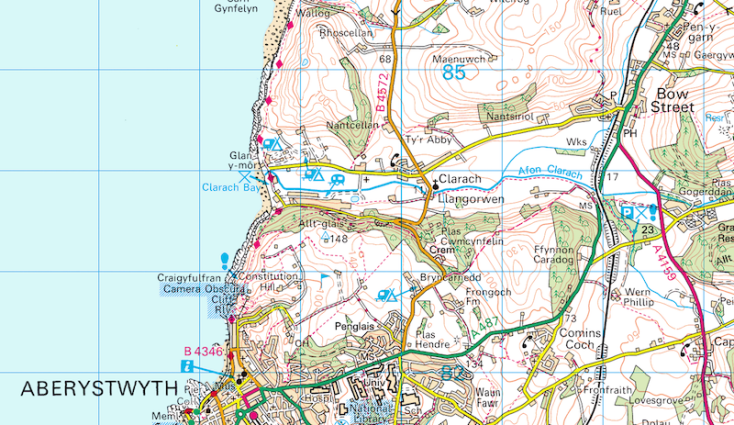
The main thrust for the new single platform Bow Street’s justification is to provide a park and ride facility for commuters travelling into Aberystwyth. Plans include a new road junction between the A487 and A4159 (top right on the map) to provide access into the new station site which boasts 100 parking spaces, plenty of cycle racks and “innovative use of the bus interchange moulding with the platform where the trains stop”.
I can’t help wondering why someone would get off a bus at Bow Street to switch to the train if both are heading into Aberystwyth especially if the train is only hourly (at best), but I’m sure the intentions are good. £8 million sounds quite a lot of money to facilitate just 100 parking spaces; but the NSF judges were obviously impressed.
Next up is Horden located on the Durham coast line between Hartlepool and Sunderland which like Bow Street, received around £4 million from the NSF towards its overall £10.5 million cost. The rest of the funding comes from the North East Local Enterprise Partnership (£3.34 million) and Durham County Council (£2.18 million). The new station will serve a community of around 40,000 residents within a 5km catchment area which includes Peterlee, Shotton Colliery, Easington Colliery, Easington Village and Blackball Colliery leading to an estimate of 71,000 passenger journeys a year by 2024 on the anticipated hourly train service. It looks like a very sensible investment.

In a consultation in 2016 “more than 98% of respondents welcomed the building of the station” so that sounds positive (I wonder why 2% didn’t welcome it?). Construction began in May last year and pre Covid-19 it was hoped to have the station open this summer.
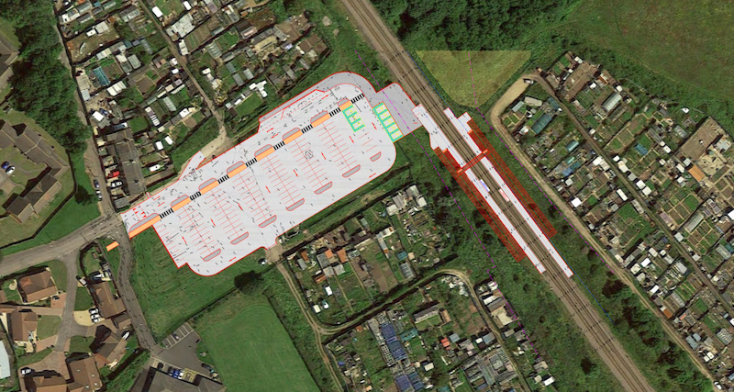
Both Bow Street and Horden have had stations in the past. Bow Street originally opened in 1876 and was sited closer to Bow Street village to the north of the new location. It closed in 1965 as part of the Beeching cuts with the original Horden station suffering the same fate, closing in 1964.
Reading Green Park is the third station due to open in 2020, but may slip back into 2021. Unlike Bow Street and Hordon there’s no history of a station at this new site which is located on the Reading to Basingstoke line and will be ideal for commuters travelling to and from the nearby Business Park with its plans for expansion as well as the Green Park Village residential development and the proposed Royal Elm Park mixed-use development. It’s not far from Reading’s football stadium too. I read that “the station will also be served by buses operating on the South Reading Mass Rapid Transit route between Mereoak Park & Ride and Reading town centre” which sounds impressive if a bit questionable.

Reading Borough Council’s planning committee backed the proposal last October but there was a bit of a kerfuffle over the location and opening times of the fully accessible toilet which will now be inside the ticket office building alongside an enquiry desk, staff rest and toilet facilities, other public toilets as well as self-service ticket machines and “shops” which seems a little excessive, but probably means a coffee shop or two.
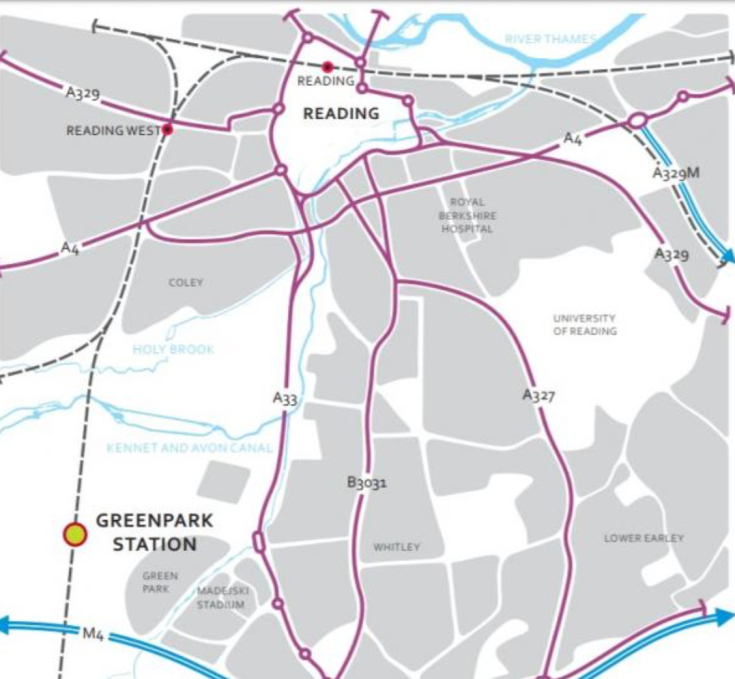
Green Park received £2.5 million from the NSF with £9.15 million from the Local Growth Fund and £5.6 million from developers towards its total £20 million cost; making it the most expensive of the new bunch.
By contrast, the final upcoming new station initially had the smallest budget at just £2.23 million at Portway Parkway which will serve an existing Park and Ride site close to the M5 (on the A4 Portway) on the Severn Beach Line between Avonmouth and Shirehampton stations.
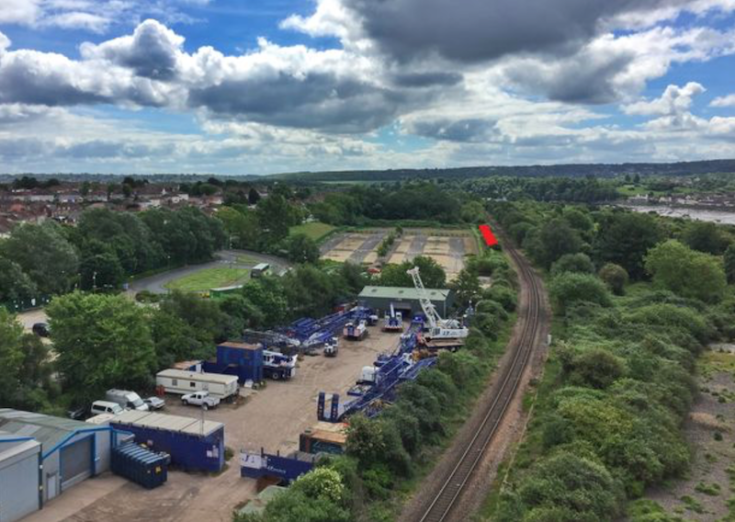
This project has been in the pipeline for over ten years and will comprise a single platform adjacent to the car park. It won £1.67 million from the NSF and the balance of £553K from the West of England growth fund. No new station ever comes in at its original budget though and there are reports Portway Parkway’s costs have risen to £3.6 million. The West of England’s Local Enterprise Partnership is stumping up the missing £1 million.
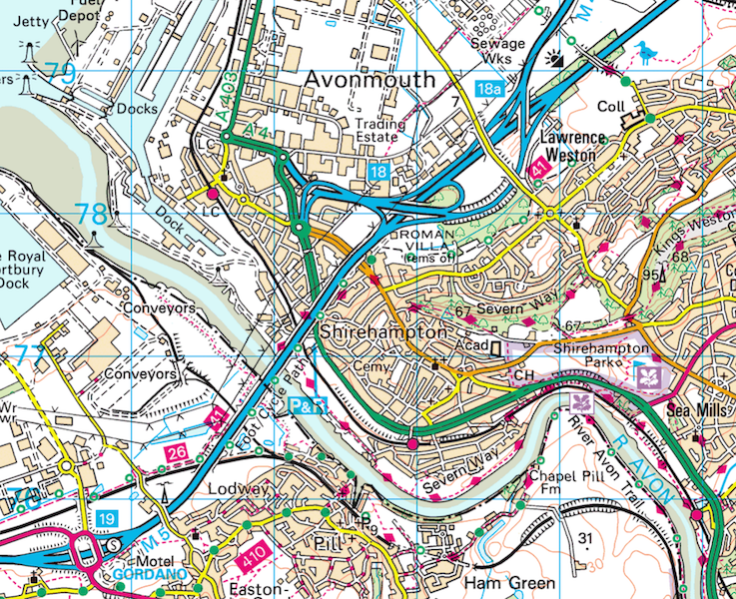
It was originally hoped to have Portway Parkway open in December 2020 but I wouldn’t be surprised to see that deadline slip into next year especially as detailed designs are only expected to be completed by the end of next month. In the meantime buses provide the 500 space Park & Ride users with their onward journey into Bristol city centre, which does beg the question, is £3.6 million good value to switch people from a bus to a train; especially when the frequency on the Severn Beach line is a rather erratic every 35-40 minutes – hardly conducive to tempt motorists.

There are much grander plans for a MetroWest programme for the Bristol region which together with reopening the Portishead freight line to passenger trains envisages an improved half hourly frequency on the Severn Beach line and extending the line to form part of a ‘Henbury Loop’ connecting over to Bristol Parkway with aspirations for a new station at Henbury too.
So that’s the four stations in the 2020 pipeline from NSF Round Two to which we need to add one or two more north of the border in Scotland.
Kintore, located between Dyce and Inverurie on the Aberdeen to Inverness line (top left in map below) is due to open in May 2020 and Covid aside, looks as though it’s ready and willing to do so. Costing £14.5 million it’s been funded by Transport Scotland’s New Stations Fund, Aberdeenshire Council and Nestrans (the statutory Transport Partnership between Aberdeen city and Aberdeenshire) and is another reinstatement of a station closed in the 1964 Beeching cuts just south of the new location.

The project has been made possible by the double-tracking of the line between Aberdeen and Inverurie and the site has 168 car parking spaces including 24 with electric charging equipment.
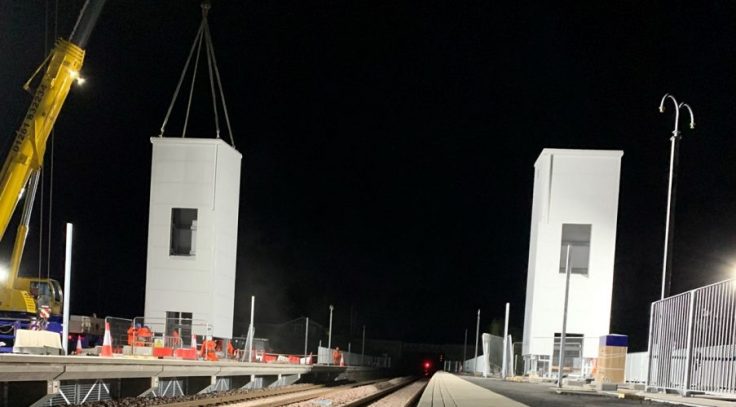
In the same neck of the woods, but not nearly as advanced is a new station at Dalcross (another original that closed in 1965) close to Inverness Airport on the same Aberdeen to Inverness line which has been in the offing since 2006. The latest delay arises after a decision to expand the station to two platforms rather than one with a new passing loop but I saw in the news a couple of weeks ago it’s now received planning permission. It’s expected to open “before 2024”. While we’re in Scotland, mention also of two proposed new stations on the East Coast Main Line: one at Reston between Berwick-upon-Tweed and Dunbar (where a station closed in 1964) and the other a bit further north at East Linton between Dunbar and Drem where campaigners were delighted to see groundworks being carried out on the site in January, but they were merely survey and investigative work at this stage, although it’s hoped a station will be open “before 2024”.

Both Reston and East Linton look like far too small settlements to justify new stations on a busy inter-city two track railway to me.
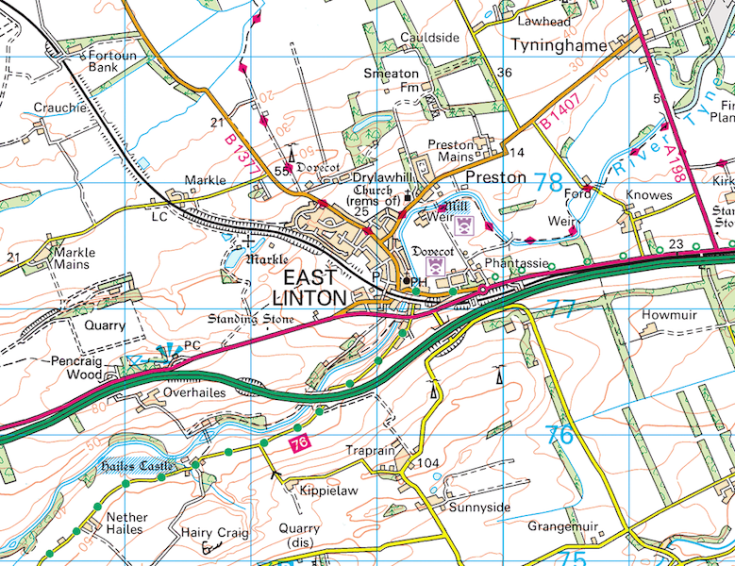
There’s also talk of a new station as part of a development at Winchburgh on the line from Edinburgh to Linlithgow but this seems a rather vague notion at the moment. Finally in Scotland if the re-opening of the Levenmouth line in Fife gets the go-ahead there are new stations planned at Leven and Cameron Bridge.
As for ideas for the DfT’s New Stations Fund Round Three, there’s a whole plethora of other aspirational new stations at various stages of planning, some of which already have a chunk of funding in place from various sources, some of which are much more kite flyers with a distinct lack of breeze to keep them fluttering in the air. Here’s a quick canter through what’s being discussed across England and Wales for the next few years (all pre Covid of course).
Five stations in the West Midlands are definites and indeed are planned in time for the Commonwealth Games in 2022 at Darlaston, Willenhall, Moseley, Kings Heath and Hazelwell. Both Darlaston and Willenhall will be reopenings having closed in 1965 and will be part of restoring direct passenger trains between Walsall and Wolverhampton. Planning permission is expected soon with construction expected at the start of next year. Meanwhile Moseley, Kings Heath and Hazelwell will reopen as passenger trains are reintroduced on the Camp Hill line as featured in plans incorporated into the original West Midlands Trains franchise (albeit now morphed into an ’emergency management arrangement‘). Kings Heath has received planning permission as has Hazelwell although a row is brewing as to whether it should be called Stirchley instead. Mayor Andy Street has vowed to give this further consideration. Planning permission for Moseley will hopefully follow in the coming months.
In Greater London a new Barking Riverside station is planned for the expanding residential development on the massive site of three former coal-fired power stations alongside the River Thames by newly extended Gospel Oak originating trains beyond the current Barking terminus. It’s optimistically expected by the end of 2021, with another new station between Barking and the new Barking Riverside terminus at Renwick Road having “passive provision” included for some future stage. I think we may be waiting quite some time for both these new stations.
Meanwhile in nearby Havering another major housing development on the former 29 hectare Ford manufacturing plant in Dagenham called Beam Park includes a new station of that name located between Dagenham Dock and Rainham on c2c’s Grays to Fenchurch Street line. It’s not projected to open before May 2022 and will cost a not insignificant £32.7 million. Expect delays here too.
Then there’s New Bermondsey station on the South London Line of the Overground network located on Surrey Canal Road. It’s been mired in controversy with Lewisham Council ordering an independent inquiry to investigate allegations made by nearby Millwall Football Club regarding funding, then Lewisham Council lost £20 million of funding from the GLA (including £12 million for the station) in 2018 but last August the Government approved a Housing Infrastructure Fund bid for the new station but it’s still unclear whether it will go ahead, even not taking the post Covid economic depression into account.
Finally in Greater London there’s Brent Cross West on the Midland Main Line which is being promoted by Barnet Council as part of a massive Brent Cross/Cricklewood development – it’s been given a hugely optimistic planned opening in 2022. More like 2032 I suspect.
Two proposed new stations near Cambridge include Soham south of Ely on the line to Bury St Edmonds and Ipswich line which seems to be a definite for 2022 with a planning application just submitted by Network Rail and work due to start later this year while a new station at Cambridge South to serve the hospital site at Addenbrooke’s and the adjacent Cambridge Biomedical Campus secured funding in the Chancellor’s original 2020 Budget although that Budget, post Covid, might not now be so certain.
Over in Wales, planning permission is expected to be submitted any time soon for Cardiff Parkway, a privately funded station serving a new business park at St Mellons, Cardiff Hendre Lakes (between Cardiff and Newport) and there are a whole host of new stations planned for the revamped Central Metro network in south Wales (we used to call it the Cardiff Valley Lines) with tram-trains, tri-modes and other innovations, all of which will almost certainly go ahead. New stations are planned for Loudon Square (on an extended line to Cardiff Bay) together with a newly located two-platform terminus station at Cardiff Bay itself (to be called The Flourish); Crwys Road (north of Queen Street on the Rymney line) expected by 2023, and Gabalfa between Cathays and Llandaf (north of Queen Street on the Merthyr/Aberdare/Treherbert line) but not until 2028.
Before leaving Wales, a mention of four possible new stations previously considered by the Welsh Government, having whittled 46 potential sites down to a second stage shorter list of 12. The four in question are Deeside Parkway on the Wrexham to Bidston line adjacent to the Deeside Industrial Park and the A458 with the other three possibles at Ely Mill near Ninian Park in Cardiff; St Clears in Carmarthenshire between Carmarthen and Whitland and Carno a tiny village in Powys between Caersws and Machynlleth. Deeside Parkway looks set to be the favourite out of these contenders.
Back in England there’s Marsh Barton in Devon, a scheme funded by a developer and Devon County Council to serve a retail park in Exeter between Exeter St Thomas and Starcross; work was due to start in early 2017 but finances have proved a challenge and the latest update is “a planning application expected in Spring 2020”.
Up near Preston a £40 million funding package was announced last month as part of the Government’s Transforming Cities Fund which although much lower than the £182 million bid by Lancashire County Council will still see a proposed station at Cottam (to be called Cottam Parkway) on the Preston to Blackpool Line go ahead serving the north west of Preston and act as a Park and Ride site for the Fylde area.
There are two stations envisaged on the revitalised freight only Portishead line from Bristol at Portishead and Pill; there’s aspirations for an Okehampton Parkway following former Secretary of State Chris Grayling’s kite flying of trialling a rail service on the line into Exeter. Perhaps more certain is Thanet Parkway between Minster and Ramsgate with its £34.5 million funding approved by Kent County Council and the South East Local Enterprise Partnership to serve the Discovery Park Enterprise Zone and surrounding business parks. Similarly, more certain is a new station just north of Chelmsford at Beaulieu Park as part of approved funding of a £218 million regeneration project for the city including thousands of houses, three schools, a business park, surgery, hotel and parkland as well as the three platform station with the aim of relieving congestion at Chelmsford station. All of that, of course, was in a pre Covid-19 world.
Four new stations in West Yorkshire (Elland, Thorpe Park, Leeds Bradford Airport Parkway and White Rose) were all announced in the DfT’s ‘Connecting People: Strategic Vision for Rail’ announced in November 2017 with White Rose being the most advanced and a hugely optimistic late 2021 opening date pencilled in. It would serve the shopping centre and office park at this location and be situated just south of Cottingley station on the Leeds to Dewsbury line and probably lead to a much reduced service at Cottingley. Funding will come from £173.5 million Leeds City Council was given a few years ago by the Government when the trolleybus scheme for that city was turned down.
Elland on the Calder Valley line between Brighouse and Sowerby Bridge has had its business case approved by the West Yorkshire Combined Authority with detailed designs now in progress; Thorpe Park between Cross Gates and Garforth on the Leeds to Selby line was put on hold back in 2014 due to a lack of Government funding so looks less certain while Leeds Bradford Airport Parkway north of Horsforth on the Leeds to Harrogate line envisages using existing airport car park buses extended to the new station about a mile to the west of the airport. Plans are still under development. More kite flying is a plan for a loop from the East Coast Main Line to serve a new station at Doncaster Sheffield Airport.
Meanwhile when Crossrail finally opens, there are five new stations to add to the National Rail database at Woolwich, Custom House, Canary Wharf, Tottenham Court Road and Bond Street albeit the last four are already served on the same site by the DLR and London Underground.
It’s likely the four or five successful stations in New Stations Fund Round Three will include some from the aforementioned list of 49 potential new stations, but if there’s somewhere else deserving of a brand new station, now’s the time to get that application in and make it a round 50.
If you’re interested the application form can be found here. But remember, this was all in a pre Covid-19 world. Good luck.
Roger French

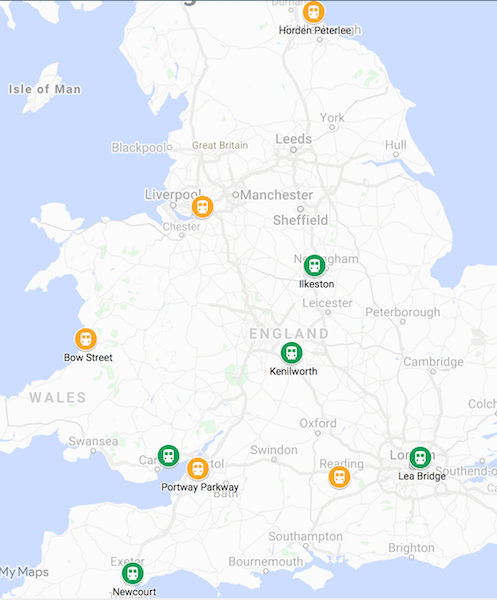
Roger – careful!
“Both Reston and East Linton look like far too small settlements to justify new stations on a busy inter-city two track railway to me”
Not for nothing is the pressure group behind the Reston and East Linton openings called RAGES (Rail Action Group East of Scotland). You don’t want to inflame passions!
Levenmouth will be the first to happen in Scotland; Winchburgh has to await a decision on which branch of the E & G it will be on. The old station site on the original E & G, in cutting is very cramped, and not close to where the majority of the housing expansion at Winchburgh is taking place, on the north side of the village along the line of the 1890 line from Winchburgh towards the Forth Bridge, but that site would require commitment to complete the Dalmeny Chord.
LikeLiked by 2 people
“Finally in Scotland if the re-opening of the Levenmouth line in Fife gets the go-ahead there are new stations planned at Leven and Cameron Bridge.”
This line has already been given the go-ahead.
Great post!
LikeLiked by 1 person
Ah; thanks for that. I didn’t know.
LikeLike
Here is the news release about the line: https://www.transport.gov.scot/news/levenmouth-on-track-for-rail-investment/. Hopefully the Cornona-virus won’t put a spanner in the works!
LikeLiked by 1 person
Thanks – ‘taken forward to the next stage’. Let’s hope that continues.
LikeLiked by 1 person
Great article Roger. Further realistic proposals that I would highlight to your readers are:
Winslow, which is to be located on the East West Railway line.
Ashington and another five stations that are expected to be delivered as part of the Newcastle-Ashington project.
LikeLiked by 1 person
Thanks- and thanks for those additions.
LikeLike
Thanks, a hugely comprehensive summary. Soham is on the Ely-Ipswich (or Bury) line. Excuse the pedantry.
LikeLike
Bow Street and Portway Parkway – absolute nonsense.
Yes, let’s have a park and ride station on the outskirts of a not particularly big place which has a 2 hourly train frequency.
And let’s kill off a perfectly good bus park and ride by having a new station next to it with a far lesser frequency and which drops you off a mile from the city centre.
And yet far bigger places more worthy of a station don’t get a look in. Marginal constitiencies anyone?
Well done to all involved.
LikeLike
As you know there have been pleas to reopen Soham for years. The problem is that it’s on the “wrong” line, i.e. the one between Bury St Ed’s and Ely. Most people will want to travel to Cambridge which means a change at Ely. That makes the journey much less attractive compared to a car or a direct bus although Bury St Ed’s, which has a good shopping centre not too far from the station, might benefit. I think I’d prefer to see Wisbech reopening although, to be fair, it would be a much bigger project and getting to Cambridge from there would take time too.
LikeLike
Green Park is already active on working timetables and hence visable on Real Time Trains etc. Yet nothing seems to have actually happened on site. Am I the only one who finds the costs excessive – £20m for a relatively small station on a brown field site.
LikeLiked by 1 person
But how many of these new stations are parkways serving cars not people?I suspect that the hordon one will be a parkway without parkway in the name as it’s in a village and the nearest town is Peterlee so I expect that most will drive from there and commute to Sunderland, Middlesbrough, Newcastle,etc..those doing long distance mainline trips would probably continue to go to Darlington or Durham to access the ECML.coronvirus will have given the car industry a huge boost as people won’t want to risk catching coronavirus on shared transport and I doubt that they are going to drive to a parkway and risk,real or perceived, coronavirus?l note that many of these parkways now have electric car charging points I don’t know where the pseudo environmentalists who drive them think that the power comes from or all the materials to make them or what happens to them when they reach the end of their usefulness.
LikeLike
Bow Street
£8 million is cheap for a new station nowadays, even on a single-track railway. The cost will include the new road junction, car park, bus interchange. The Welsh Assembly Government is keen on integrated public transport. I agree that there is limited scope for interchange with the current hourly train service (some longer gaps during the day). I’m not sure if there is still a passing loop at Borth which could allow a more frequent train service between Aberystwyth and Machynlleth. Although bus and train are both going in to Aberystwyth, they serve different locations. There is the potential for train passengers from (say) Machynlleth or Newtown changing to bus at Bow Street for the University or National Library, rather than train into Aber and bus out, or car all the way. Also to drive from the villages to Bow Street and take the train in 8 minutes rather than 20 minutes+ at peak time by car.
The summer timetable allows for trains stopping here (shown as “Unadvertised” at present on sites such as RealTimeTrains).
LikeLiked by 1 person
I’m pretty sure that there isn’t a passing loop at Borth. I was there just day before the lockdown started!
LikeLike
Horden (please note the spelling)
Construction work has continued, despite Covid-19. The main footbridge, ramps and stair units have been installed: https://www.railbusinessdaily.com/horden-station-reaches-significant-milestone/
Like other new stations such as Ilkeston, Hordon is dominated by the access ramps to the footbridge (shown red in your aerial photo – what are the orange blobs along the car park?)
As with Bow Street, the summer timetable includes time for trains stopping here (“Unadvertised” at present).
LikeLiked by 1 person
Thanks- spelling corrected.
LikeLike
Another Station long promised but seemingly short of funding is Wixams between Bedford and Flitwick on the Midland main line. Planned long ago to serve a new housing development that was much delayed by the financial crash it seems the developer’s contribution is now insufficient and of course the cost will have gone up.
Less likely is a long mooted stop at Bedford Interchange on the Bedford – Bletchley line to serve a retail park. Can’t really see that happening now with the East-West Rail developments.
LikeLike
I’m always amazed at the cost of providing a simple platform and shelter for a new / reopened station on an existing passenger line.
LikeLiked by 1 person